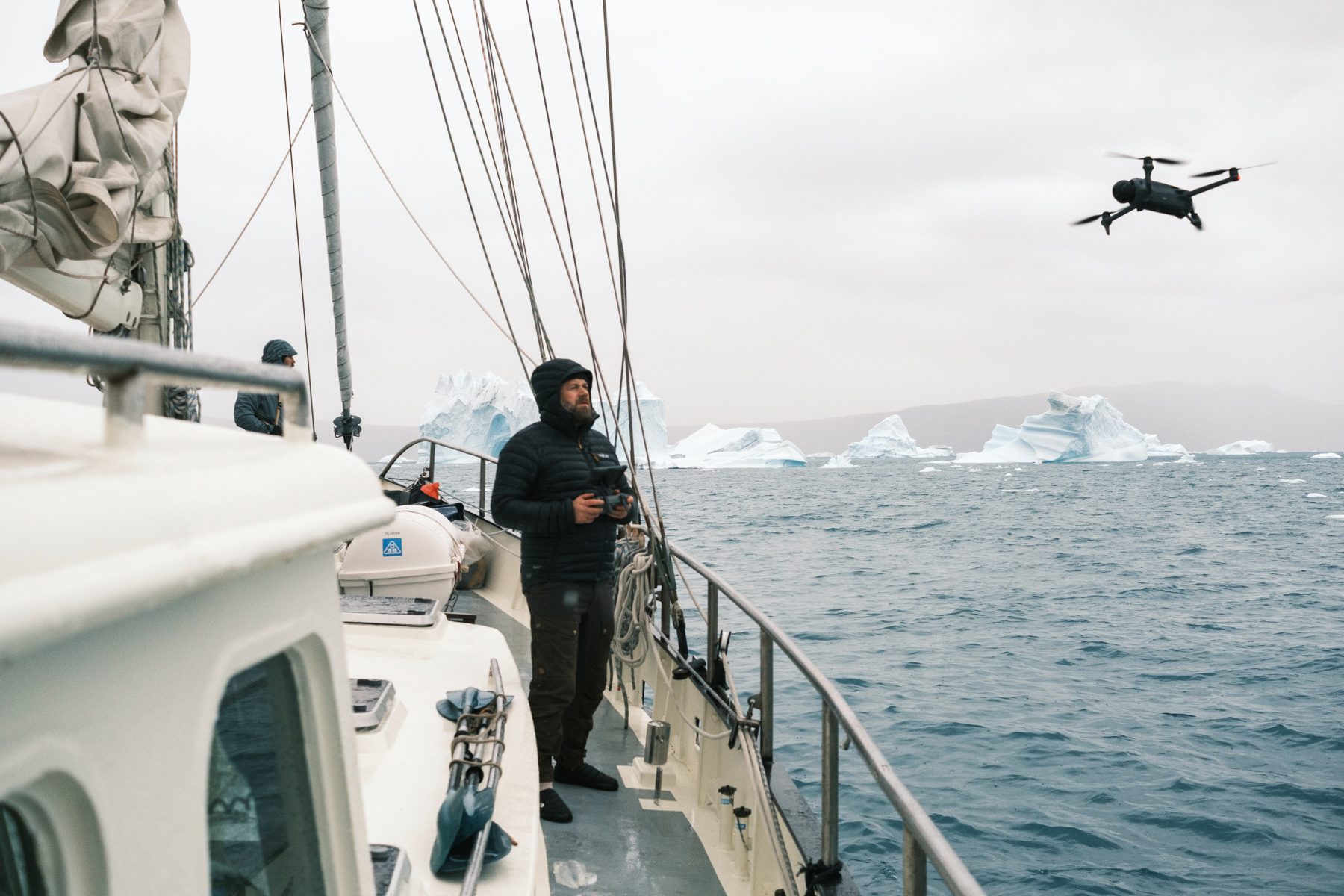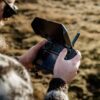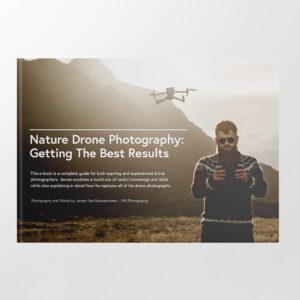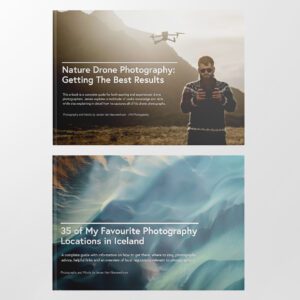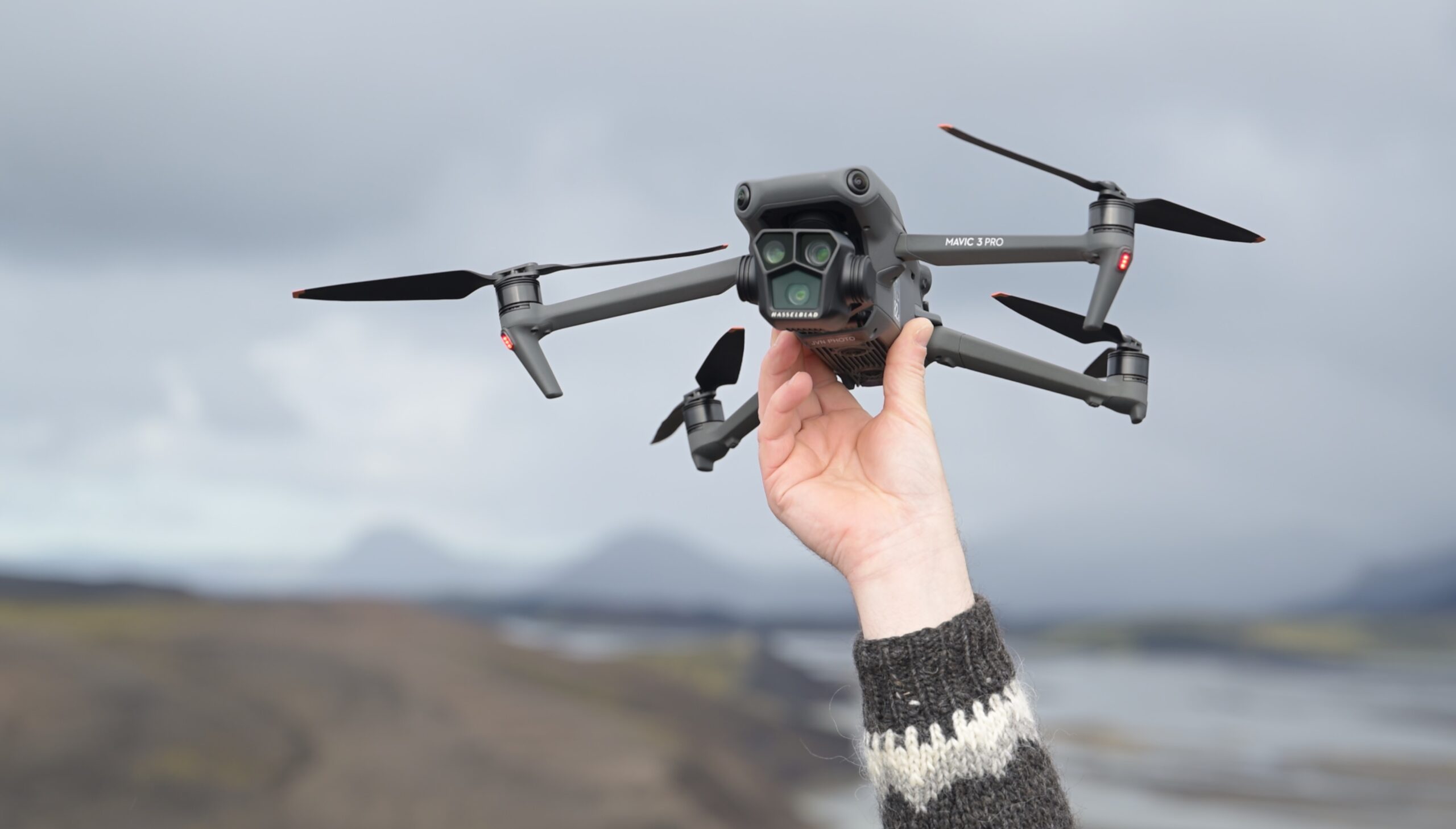Flying a drone from a boat is one of the most exciting, but challenging, things you can do as a photographer. Despite the challenges, the rewards are plenty. Whether you are capturing rarely seen landscapes, towering icebergs or marine wildlife from above, while the boat glides through the waters, it can feel absolutely magical & exhilarating. But the risks are also real. I have flown my drone from dozens of boats over the years, mostly during photo workshops in Greenland. During these adventures I have seen everything from flawless takeoffs to drones vanishing into the sea.
In this article, I want to share my first-hand experience, including the best practices, common dangers, and the safety procedures I teach participants on my workshops. Whether you fly a DJI Mini 3 Pro or a DJI Mavic 4 Pro, these principles apply to every pilot who wants to fly safely from a moving or anchored vessel. Grab a cup of coffee (or tea!) and sail with me through my top tips when flying your drone from a boat.
Want to join me on of my boat-based photography workshops? Make sure to check out my dedicated page with photo workshops in Greenland.
Thanks to Greg Purnell for taking the cover photo to this article, which is a lovely photo of me landing my drone on the East Greenland Photo Expedition in August 2025.
Over the years I have built up a lot of experience with flying from small boats such as this quaint sailboat named Tilvera during my 2024 photo expedition to East Greenland.
Why Flying A Drone From A Boat Is Different
Flying from land gives you stability, predictable takeoff conditions, and a reliable home point. When you’re flying from a boat you get none of that. There is a lot more to think about and consider. Just to name a few examples: a boat moves all the time in all directions (also up & down) even when anchored, there are ropes & cables everywhere and very little room for error.
What makes it even trickier is that drones rely on GPS for positioning and for all automated functionality such as the RTH (Return To Home) functionality. On a moving boat, relying on such functionality is a disaster waiting to happen. If you lose connection, your drone will try to fly back to its original home point which is likely somewhere over open water. That’s why understanding & mastering manual control, battery management, and communication on board are absolutely critical.
So what is the best way to avoid disaster when flying your drone from a boat?
Best Practices For Safe Drone Flights From Boats
Over the years, I’ve developed a set of rules that I follow and teach on every workshop where we have to fly from a boat. These aren’t just guidelines: they have helped avoid unnecessarily stressful situations, saved drones (& footage!) and calmed nerves more times than I can count.
1. Always Hand Launch And Hand Land
Takeoff & landing from your hand is the safest and most controlled option to fly from any boat. On any boat, open space is generally sparse. Decks are rarely clear and ropes, antennas, or uneven surfaces can throw off your drone’s sensors and make the whole procedure much more complicated. This is especially true when the boat is moving, which means that as soon as your drone takes off from deck, it stays stationary in relation to takeoff point but the boat continues moving. That means it could immediately hit something. The same is true when landing. By taking off & landing by hand you can more quickly get the drone up or down and keep it controlled in even the smallest of open spaces.
Additionally, when performing a takeoff procedure from a boat, it is even more important to make sure you have a proper GPS lock and a locked home point before flying away from the boat.
If you’re unsure how you can safely hand launch and hand land, I highly recommend having a look at my Drone Photography Masterclass where we not only delve deep into drone photography, but also teach you how to safely perform hand takeoff and landings.
Hand launching and hand landing a drone is one of the most useful skills you can learn – especially when you plan to fly from boats. In the Drone Photography Masterclass, we spent an entire video lesson on how to do it safely.
2. Identify & Use The Most Open Area Of The Boat When Possible
Make sure to give yourself plenty of space by taking off and landing at the most open space on the deck. Before flying, always identify where is the most ideal place to takeoff and land from. On most boats this is either the middle or the back (aft) of the boat. I find that, depending on the boat you are on, they are generally the most stable areas while also being clear of obstacles such as ropes or railings. This, of course, varies between vessels.
3. Fly Away From The Boat First Before Ascending
Once your drone lifts off from your hand, immediately fly away from the boat (10+ meters) before climbing in altitude. This makes sure that you avoid getting caught up by the boat while it is moving, hitting the mast(s) or people nearby. It is also vital to identify what direction the wind is coming from and how the boat is moving. This will help you pick the best trajectory to fly away to before ascending. Generally you want to be in a space where the movement of the boat is going away from where the drone will hover after takeoff, while also making sure the wind pushes the drone away from the boat.
A few examples to illustrate:
- If the boat is moving forward, try to take off from the aft so that when the drone hovers, it will hover away from the boat.
- If the boat is spinning towards port side, try to take off on the starboard side so the drone hovers over the water while the boat spins away from it.
- If the wind is coming from starboard, try to be on port side so the wind pushes the drone away from the boat.
Identifying the most suitable space on the boat to fly from is vital in making sure you don’t run into problems during takeoff or landing. Thanks Greg Purnell for this photo taken on one of my Greenland photo workshops.
4. When In A Group, Never Start Flying All At Once
When several people have drones and want to fly them from a boat, it’s best not to all take off together but do it in an organised way. Apart from interference risks, it creates chaos during landing. Coordinated turns keep things calm and safe. If everyone takes off one by one, it will also mean that people have to land one by one due to the batteries generally running out at a similar time.
5. Don’t Land All At Once
The same goes for landings. Give each pilot space and time to land safely before the next person attempts it. Due to the movement of the boat & possibly the weather, multiple attempts may be needed to try and land. Especially when it is windy and/or wavy, it can take a few tries to get it right.
6. Communicate Clearly & Loudly
Communication when flying drones from a boat is everything. Before takeoff or landing, I always announce loudly what I am doing: “Taking off!” or “Landing drone!”. That way, everyone on deck knows what’s happening and can stay clear.
When multiple people are flying, I make sure everyone calls out their altitude as well, making sure that everyone keeps at least 10 meters of vertical separation between drones to avoid collisions.
If you are in trouble, communicate it loudly and clearly. When two people are coming in for a landing at the same time, it’s good practice to communicate battery percentages so you can prioritise who has the most urgency to come in for a landing.
7. Ask To Adjust The Boat’s Speed For Landings
If I need to land, I always ask the captain to slow down or briefly stop the boat. Even a few knots of speed can make hand-catching the drone very difficult, especially in strong wind. Again, communication is key here. Make sure you are always able to speak to the captain in order to perform a safe landing.
Pro tip: If there is no way to get the boat to adjust speed, there is a workaround by using the Cruise Control functionality on your drone. However, it should be noted that this is for experienced drone pilots only! Try matching, and then slightly exceeding, the speed of the boat using Cruise Control. That way you can focus on grabbing the drone when it eventually gains up to the boat. This works best when approaching the boat from the aft.
8. Know When To Disable Proximity Sensors
Sometimes your drone’s obstacle avoidance sensors will fight against your landing attempts. This usually happens when the drone is detecting the boat itself or even your hand as obstacles. In these moments, switching to Sport Mode or temporarily disabling sensors in the Advanced Safety menu can help you regain control and perform a safe landing. However, it is highly advisable to be experienced with flying in Sport mode before attempting this. Movements in Sport mode are faster and more sudden, which means you need to be extra cautious.
9. Never Use The Automatic Return To Home Functionality
This is one of the biggest mistakes any drone pilot can make when flying from a boat: using the automatic Return To Home functionality on your drone. Because the boat is generally always moving, it means that whatever your home point was during takeoff, will no longer be your actual home point when you come in for a landing. The moment your drone tries to return home automatically, it will head back to where the boat used to be, which is now open water. There are two options: either you don’t rely on the home point at all, or you remember to frequently update it to the controller’s location in the menu. However, even when flying back to an updated home point it will still not allow you to automatically land as the GPS tracking is not precise enough to land on a boat full of obstacles.
On some newer drones, such as the DJI Mavic 4 Pro or DJI Mini 5 Pro, you can use the Dynamic Home Point feature. By pressing the home point button during flight, you can update the home point dynamically and constantly. While this functionality still does not allow you to land on the boat itself automatically, it will ensure a safer recovery if something goes wrong.
10. Always Leave A Battery Buffer To Give Yourself Time To Land
Landing your drone on a boat can take longer than expected, especially if the boat is not stable, the deck is crowded or weather conditions shift. That means you need to leave extra battery life to account for tricky landings. I never push my batteries below 25% in tricky conditions and always plan to be ready to land with a minimum of 10–15% left. That margin can make the difference between a safe landing and a lost drone.
Common Dangers When Flying Drones From Boats
Even when taking all of these rules & guidelines into account, experienced pilots may still face some risks. Here are the most common ones I have encountered during various workshops:
- Metal decks and communication equipment may interfere with your drone and cause loss of GPS or compass interference. It is therefore important you know how to manually navigate and recognise your surroundings.
- If you fly low to the water, or its a very windy day, salt spray from ocean water may affect sensors or lenses.
- It is important to understand that when you are flying from a boat, you may experience stronger winds than what you are used to on land.
- Make sure you are clearly communicating to avoid communication mistakes between yourself as the drone pilot, other drone pilots or the boat crew.
- I have mentioned this before, but relying on the automated Return To Home functionality may cause mishaps caused by a moving vessel.
Understanding these risks, together with the rules & guidelines I have outlined, will help you anticipate and avoid them. As always, the key here is preparation, awareness, and teamwork.
My Final Thoughts
Flying a drone from a boat isn’t rocket science but it does take some consideration to get the most out of it and do it in a safe way. For me, it has proven to be one of the most rewarding ways to photograph the natural world. Some of my favorite aerial shots of Greenland’s icebergs and fjords were taken from small expedition boats, often in unpredictable Arctic weather. Every time, I remind myself that safety comes first, both for the drone and for everyone on board. When done right, the excitement of sending the drone out over the water, capturing epic scenes, and watching the footage afterwards makes it a stress-free and unforgettable experience.
Bonus Tip For (Future) Workshop Participants
If you are joining one of my Greenland photo workshops, don’t worry if you’ve never flown from a boat before. I will personally guide you through the process, from hand-launch techniques to dynamic home point setup, so you can focus on capturing stunning aerial images safely and confidently.
DISCOUNT
The Drone Photography Masterclass
Nigel Danson & Jeroen Van Nieuwenhove‘s complete drone masterclass will explore everything you need to know to start creating the best aerial photographs using any type of drone in 50+ detailed videos. Whether you are a complete beginner or an advanced drone pilot, this video course contains a vast amount of information to level up your drone photography skills.
What Participants Of The Drone Photography Masterclass Said…
Discover Jeroen’s Photo Workshops in Iceland, Greenland & Beyond
Ready to take your photography to the next level? Join me, Jeroen Van Nieuwenhove, on unforgettable photo workshops in Iceland, Greenland, Antarctica and other exciting destinations. Whether your passion is wildlife photography, bird photography, landscape adventures, or mastering drone photography, each workshop is designed to give you hands-on guidance in some of the world’s most spectacular locations.
From puffins in the midnight sun to Arctic foxes in the wild, from glaciers and volcanoes to dramatic coastlines seen by drone – these journeys are more than workshops; they’re once-in-a-lifetime experiences. Group sizes are kept small, ensuring personal mentoring and plenty of shooting opportunities.
Looking for something specific? Check out Jeroen’s…
- Wildlife & Bird Photography Workshops (Puffins, Arctic Foxes)
- Drone Photography Workshops
- Photo Workshops in Iceland
- Photo Workshops in Greenland
Spots are limited – secure your place today!
What Previous Workshop Participants Said…
These reviews are verifiable on Jeroen’s public Google Business profile.
Support Jeroen’s Work
As an independent photographer, Jeroen partially relies on your support to keep producing worthwhile content such as blogs, photographs, books and much more. If you want to support his work, it is possible to do so by buying his e-books & books, prints or calendars.
You can also sign up to the newsletter to stay up to date on new blog posts, projects, workshops and other interesting information.
Thank you for considering!

